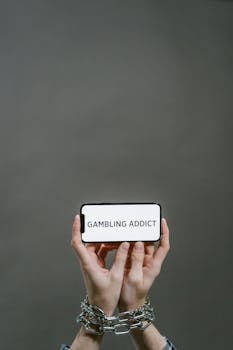You unlock your smartphone, meaning to check a message, but five minutes later, you’re tapping furiously at game levels. It feels harmless—until you realize your dinner’s gone cold or you’ve missed a deadline. The pull of mobile games is real, and so is the challenge of balancing them with everyday responsibilities.
This balance matters. As gaming apps become more immersive and accessible, the risk of losing track of time grows. Without some strategies in place, mobile gaming can seep into work hours, family time, and self-care. A little planning goes a long way toward making gaming feel rewarding rather than regretful.
This guide digs into realistic routines, decision points, and conversation starters for gamers who want the joy without the stress. If you’re looking for tips you can implement today—without judgment—read on.
Creating Intentional Play Windows Sets Boundaries Automatically
Choose specifics, not vague hopes: Block gaming into certain hours, keeping it as an intentional part of your day. Setting clear play times relieves guilt and helps make gaming a reward.
Try placing gaming after a task, like after responding to work emails or prepping lunch. It helps you link fun to productivity, much like enjoying dessert after dinner instead of before.
Design a Simple Play Schedule That Respects Your Needs
Write down when and where you want to play. Example: “15 minutes on the train home, no gaming during dinner.” This makes the habit visible—and easier to stick to.
Set a timer when your session begins. When the alarm chimes, finish your level, put the phone down, and say aloud, “Time for the next thing.” These closing rituals help you transition to other activities.
If you’re a visual thinker, post your plan somewhere you’ll see it—a sticky note by your desk or a calendar alarm. Constant reminders anchor your intentions throughout the day.
Connect Play to Rewards—Not Procrastination
If you use games to procrastinate, try switching the script: “When I finish this report, I’ll clear three game levels.” This ties achievement to fun, not avoidance.
Feeling the itch to play before a task? Pause and tell yourself, “I’ll game when I’m done.” Delays can train your brain to pair play with productivity, instead of letting it interrupt.
Even a quick breath or walk—instead of starting a game impulsively—can help rewire the sequence. Over time, you’ll find the urge to game fits better after productive moments.
| Time Slot | Purpose | Game Time (minutes) | Takeaway |
|---|---|---|---|
| Morning commute | Short break, low stakes | 10 | Use this slot to unwind before the day starts |
| Lunch hour | Recharge energy | 15 | Play only after eating or light exercise |
| After chores | Reward for completed tasks | 20 | Gamify chores to enjoy play guilt-free |
| Evening wind-down | Decompress | 10 | Set a hard end time for better sleep |
| Social time (solo) | Optional shared activity | Flexible | Invite friends or family for a group game |
Managing Distractions is Simpler with These Practical Adjustments
Gamers sometimes multitask, juggling notifications and in-game alerts. Silencing nonessential alerts during play can prevent loss of focus on both gaming and real-life tasks.
Place the phone away during meetings or meal times—even if you feel the urge—so you train your mind to associate gaming with dedicated breaks, not background noise.
Experiment With Do-Not-Disturb Settings
Engage “Do Not Disturb” for both gaming and busy periods at work. Tell colleagues or family, “I’ll respond after this block.” It prevents constant, low-grade interruptions.
Keep your device on silent for one hour daily outside of play. The quiet is restorative, and you’ll notice urges pass more quickly when there’s no ping or buzz to draw your focus.
- Turn on “Do Not Disturb” at set times. This gives uninterrupted focus for both work and play–crucial for quality time management.
- Separate work and play notifications using app settings. Only allow essential alerts. This decreases distractions, whether you’re preparing a report or tackling a tough dungeon.
- Physically move your device into another room during meals and conversations. This gesture signals boundaries to yourself and those around you.
- Tell friends, “I’ll game with you after dinner.” This sets shared expectations and discourages impromptu sessions that conflict with responsibilities.
- If you play at night, set a blue-light filter. It creates a visual cue to wind down soon, supporting restful sleep.
Each strategy distances you from reactive play and brings more intention into your daily schedule. Your gaming experience—and your productivity—will improve with these small tweaks.
Organize Games by Priority for Fast Decisions
List games by how much focus they require. Puzzle games for short, low-pressure breaks; strategy titles for times you can invest more attention. This prevents “just five more minutes” from stretching into hours.
Let your home screen feature only current favorites. Put everything else in a folder called “Later.” This list structure makes play sessions more purposeful and less impulsive—even on days packed with back-to-back commitments.
- Keep your most-used apps easy to reach for quick sessions, not deep dives. This reinforces mindful gaming.
- Declutter by archiving rarely played titles monthly. Fewer options reduce decision fatigue and reclaim storage space.
- Try sorting by play style, such as “action for weekends, casual for waits.” Match your mood and schedule in seconds.
- Rename folders by mood: “Chill,” “Challenge,” “Friends.” You’ll pick games that fit both your time and energy levels.
- Add a recurring reminder—“Review game apps on Sunday night.” This keeps your mobile library current and relevant.
Streamlining your app layout will help you approach mobile gaming as an intentional hobby, not a default time filler.
Redirecting Unplanned Gaming with Real-Life Anchors
Pausing before a game session can create self-awareness. You can ask, “Am I playing for fun, out of boredom, or to avoid a chore?” This mental check keeps your choices conscious.
Replace the autopilot game tap with an action: drink water, stand up, or jot a to-do. Each anchor acts as a fork in the road, giving you a chance to redirect your attention.
Embed Pause Prompts Before Play
Physically move to another space before starting a game. The disruption shakes up habit loops and encourages a mindful check-in before you play.
Set a phone wallpaper that reads, “What else could I do instead?” This environmental cue breaks automatic behavior, so your next move feels deliberate, not unconscious.
If you’re about to open a game to escape stress, consider taking a slow, deep breath or stretching for one minute instead. You’ll spot if you’re gaming to relax or to delay something unpleasant.
Build Replacement Routines for Guilt-Free Leisure
Try this: Next time you crave a quick level, opt for a micro leisure activity—like doodling or reading a page. Later, reflect whether the urge to play lessened after something different.
Use analogies from daily life: If you eat a snack every time you’re bored, you may feel sluggish. Swap some snacks for water, and over time, cravings adjust. Habit swaps in gaming follow a similar path.
Share the intention out loud: “I’ll play after doing X.” Verbal commitments—even alone—tend to stick better, reinforcing the swap and retraining impulse-driven habits.
Swapping Autopilot Play for Intentional Choices
Unplanned play can feel like second nature, but changing even one small process can reset your program. Picture swapping your usual path to the kitchen with a detour through the backyard—the change sparks new habits.
Consciously launching a different app or putting the device down for a moment at regular “trigger times” can act as a reset, so gaming fits within other activities, not the reverse.
| Situation | Default Response | Swap Action |
|---|---|---|
| Boredom at work | Open game instantly | Take a short walk, return after 3 minutes |
| Waiting in line | Puzzle game until done | Call a family member or friend, chat for a few minutes |
| Stressful moment | Launch soothing game | Ten mindful breaths before gaming really begins |
Comparing default routines with swaps clarifies where autopilot takes over. With a few practice runs, you’ll see more opportunities to choose how, when, and why you play.
Recognizing Social Triggers that Fuel Random Play
Group chats and push notifications tempt you to jump into a match. Think of it like a group ordering takeout—easy to say yes, harder to track what you wanted in the first place.
Notice patterns: If three pings make you unlock your phone every evening, mute or archive game chats by default. Reactivate only during your preferred play windows, and let friends know your system.
Try swapping responses: When someone writes, “Game now?” reply, “I’m free after dinner—let’s plan.” This nudges group play times into boundaries that suit your life.
If you still get pulled in, use a physical cue—like turning the phone face-down or placing it away for an hour. These tricks keep you from joining every spontaneous session.
Adopting Fast, Repeatable Routines for Healthy Gaming
- Set scheduled play blocks with a timer to structure sessions and prevent accidental overuse.
- Use device sleep or downtime modes to reinforce time limits and ensure healthy breaks between sessions.
- Move your most addictive games to a hidden folder so they’re less likely to hijack spontaneous downtime.
- Post your daily priorities somewhere visible to remind yourself of goals before each play session.
- Swap group chat notifications for calendar invites so you play alongside others by design, not by accident.
- Recap wins with a short journal note after each session to keep play feeling like progress, not mindless activity.
- Repeat a closing phrase like “Game over, back to real life” aloud when a session ends. This anchors transition and reduces lingering gaming thoughts.
Each habit makes it easier to keep gaming as a positive part of your routine—not something that steals time from you. The sum of these routines is greater than any single one, especially when repeated daily.
Routines—like daily shutdowns or post-game reflections—create a rhythm. This rhythm, over time, turns good decisions into second nature, keeping play guilt-free and purposeful.
Refining Your Approach for Lasting, Flexible Balance
Balancing mobile gaming isn’t a one-time fix—it’s a series of ongoing corrections. Check in with yourself weekly: What worked? Where did your resolve slip? Adjust as you learn what fits best.
The real reward of mindful gaming habits is the freedom to enjoy both digital and real-life moments fully. You’ll catch yourself smiling at game victories and dinner conversations alike, without feeling pulled in too many directions.
Every shift—big or small—in how you engage with gaming can unlock positives elsewhere: deeper relaxation, stronger focus, better relationships. You’re not blocking fun; you’re letting it shine in the right spaces.
Remember, balancing play with daily responsibilities is like tuning an instrument: you adjust, you listen, you play. Over time, both life and gaming sound better with the right balance.

